Some of the links in this post may be affiliate links.
If you want a vining plant that is just as easy to grow as a pothos or heart leaf Philodendron but want something a bit showier and distinct, then Scindapsus pictus is the plant for you! It is a cinch to grow so let me talk about how to care for this gorgeous houseplant.
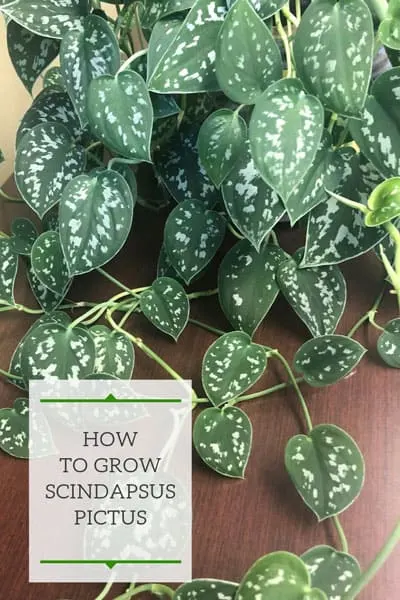
Before I get into the care of this plant, let me clarify the various names of this plant. There are so many common names for this plant. It’s out of control!
Among the common names are: Satin Pothos, Silver Pothos, and Silver Philodendron. To add to the confusion, this plant is neither a pothos nor a philodendron! Although they are somewhat related.
Common names are just confusing. The botanical name for this plant is Scindapsus pictus. There are a few variations of this plant, some with more variegation and some with less. I believe the one I have is Scindapsus pictus ‘Argyraeus.’
Another version of this plant is Scindapsus pictus ‘Silvery Ann’ which has even more variegation. The care is the same.
Table of Contents
Scindapsus Pictus Care
All the photos in this post are photos from the plant that I have in my office at work in a meeting room. It sits maybe 4 feet or so from a Western window.
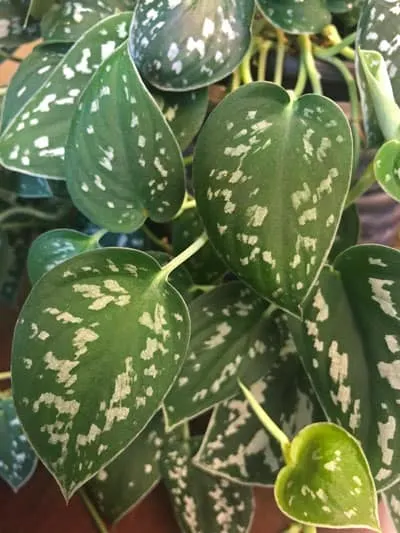
I noticed that when I first obtained the plant, it took a bit of time to adjust and grew a little slowly. After a while, the growth sped up and now is a few feet long.
Let’s go into the details now on what Scindapsus pictus likes.
LIGHT
These plants thrive in bright indirect light. A little bit of sun would work too, but in general, they don’t like a lot of direct sun. A bit of morning sun would work well though. Morning sun in gentler than afternoon sun.
For best growth and health, place these plants close to a bright window. Within 1-2 feet of a window that gets bright, indirect light. A large Northern window or Eastern window would be ideal.
Too little light would slow down the growth dramatically, as well as lose the beautiful variegation, whereas too much direct sun would scorch the leaves.
If you have very sunny Western or Southern windows, consider moving the plant just a bit back so it doesn’t receive too much sun, or diffuse the light with blinds or a sheer curtain.
WATER
In general, I recommend my usual approach to watering. Water throughly until water exits the drainage hole(s) and discard the excess water.
Don’t water again until the top inch or so of the potting mix dries out.
I have forgotten about my plant a few times and let it go too dry. It is pretty forgiving as long as you don’t completely forget about it!
One common symptom of the soil getting too dry is that you will see all the leaves start curling under. If you notice this, feel the soil. Chances are it is bone dry. Give it a good watering and it will recover.
Another issue that you may see if the soil goes completely dry for a while is that the lower leaves will turn yellow. Simply take the yellow leaf off and give the plant a good watering if the soil is really dry.
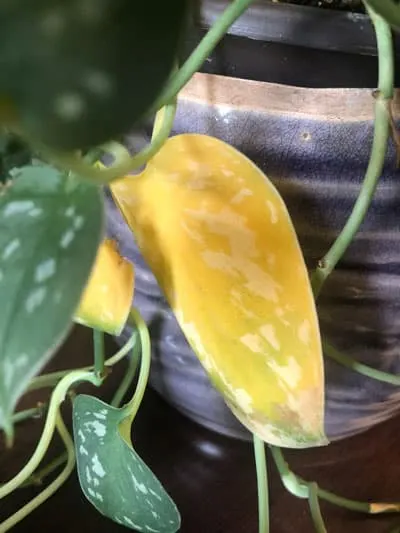
Again, when you notice anything unusual with plants in general, always feel the soil and observe. Is it completely dry? Is it soaking wet? Assuming that your plant is growing in appropriate light and comfortable indoor temperatures, your issue is probably watering related.
One interesting thing that I’ve noticed with this plant is I haven’t really noticed any issues with brown tips. If you have, I’ll refer you to my blog post on why your plants are getting brown tips. There are various reasons why plants get brown tips.
I also have a great blog post on why your plants are getting yellow leaves, and what you can do about it. Yellow leaves can be caused by a variety of issues, so be sure not to miss the blog post!
OTHER SCINDAPSUS CARE TIPS
For most houseplants, if you are comfortable in your indoor conditions (temperature and humidity), then your houseplants will be comfortable too.
Average indoor humidity of at least 45-50% is fine. If you find that your indoor air is too dry (especially in winter if you used forced air heat), it would be a great idea to get a good humidifier.
My indoor air during the winter is painfully dry, so I invested in a good humidifier.
I got tired of the cheap, junky humidifiers, so I some some research and found an amazing one.
HUMIDITY
My favorite humidifier and the one I use every winter is from Levoit. You can purchase it from Amazon and it is well worth the investment.
The Levoit Ultrasonic Humidifier can be used as cool mist, or warm mist, and has tons of features and is very customizable depending on your needs.
It is quiet, has a remote control, has an auto shut-off and is very well built.
You can even use essential oils in it if you’d like! You won’t regret it! My dry skin also thanks me, not to mention all my plants.
So if you’ve been frustrated with other humidifiers, give the Levoit Ultrasonic Humidifer a shot. You won’t be disappointed.
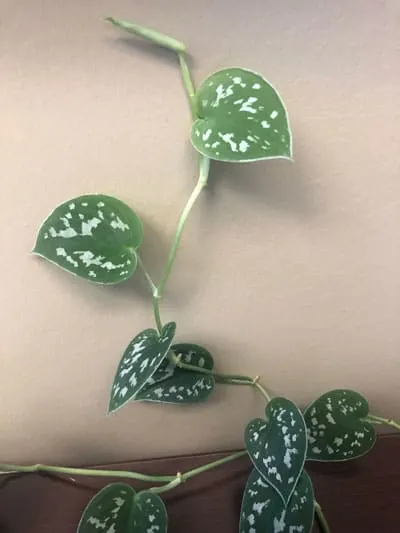
FERTILIZING
As far as fertilizing goes, my absolute favorite fertilizer is Dyna-Gro Grow. I buy it off of Amazon as well and it is a fantastic all-purpose fertilizer that i use for most of my houseplants. It is well worth getting a premium fertilizer like Dyn-Gro Grow!
I like to fertilize all year except during the winter. For most of my houseplants, I use 1/4″ teaspoon per gallon of water every time I water. It works well for all tropical foliage houseplants and I also use it for my orchids.
I really have noticed a difference with this fertilizer. Plants grow better, are more vigorous, and my flowering houseplants also produce more flowers.
PROPAGATING SCINDAPSUS PICTUS
It is super easy to propagate this plant. You can propagate this plant just like you would propagate Pothos (Epipremnum aureum) or Heart Leaf Philodendron.
Take a look at the photo below.
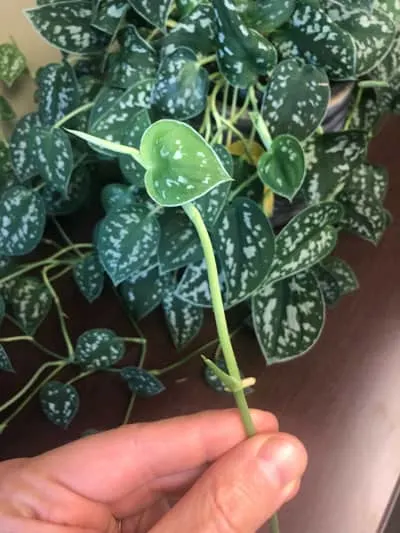
All you need to do is make cuttings that have at least one node (where the leaf meets the vine). Make sure each cutting has at least one leaf, or two. Don’t make your cuttings too long.
You can see in the photo above that there are two aerial roots already growing at the node (right above my forefinger and thumb). Just simply cut maybe half an inch below each node, and place the cuttings in water.
I like to place any leafy tropical plant cuttings in bright indirect light and try to avoid much direct sun.
Make sure that the node is under water because this is where the roots will grow from.
Once the cuttings have roots that are an inch or so long, you can pot them up in a small pot. That’s really all there is to it. If you leave the cuttings a bit longer in water, that’s ok too. Just don’t forget and wait forever.
As far as potting soil goes, a good general mix that I use all the time for my tropical foliage plants is the following:
- 3 Parts Miracle-Gro Potting Soil
- 1 Part Perlite
Mix it all up together really well, and this is a GREAT all-purpose potting mix for the majority of leafy tropicals!
That’s about it folks! Do you have a Scindapsus pictus? Comment below! I’d love to hear from you.

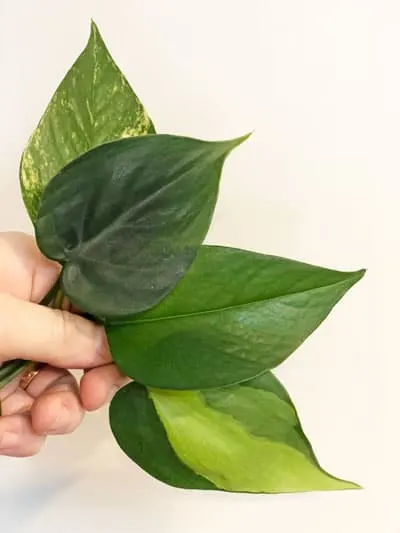
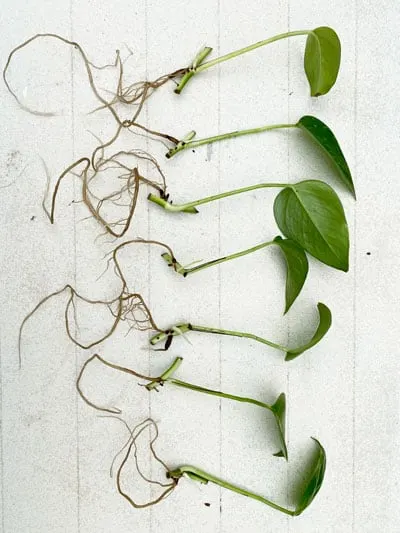
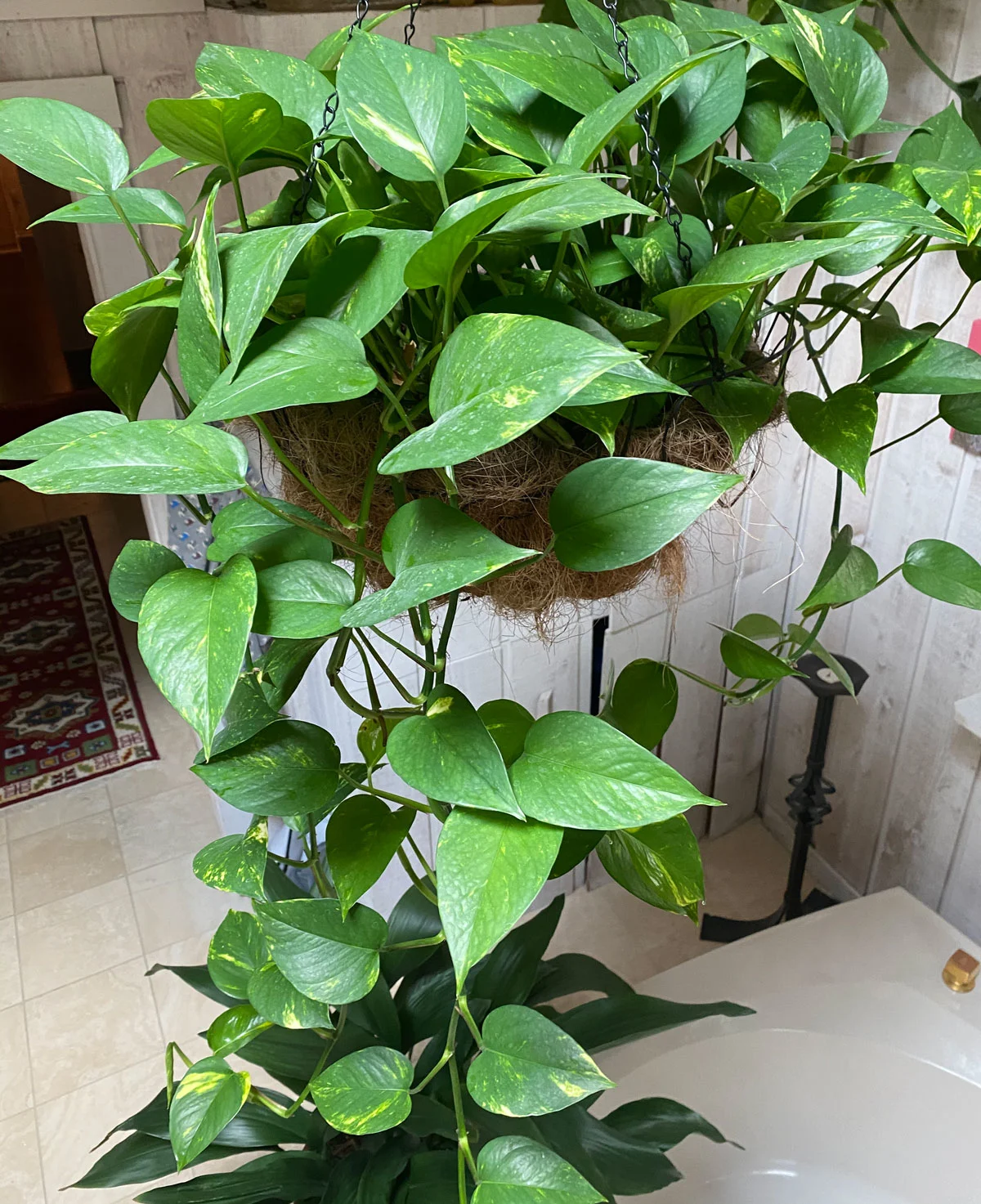
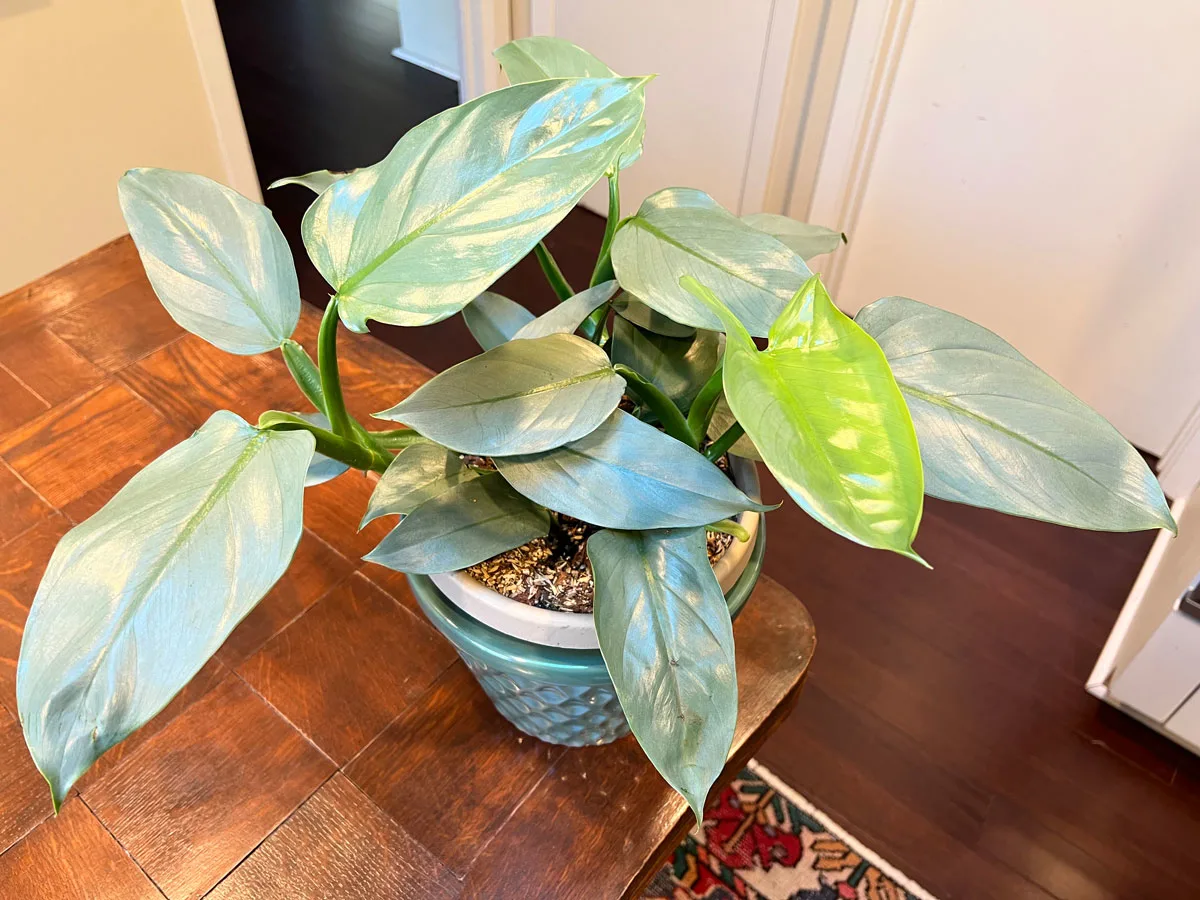
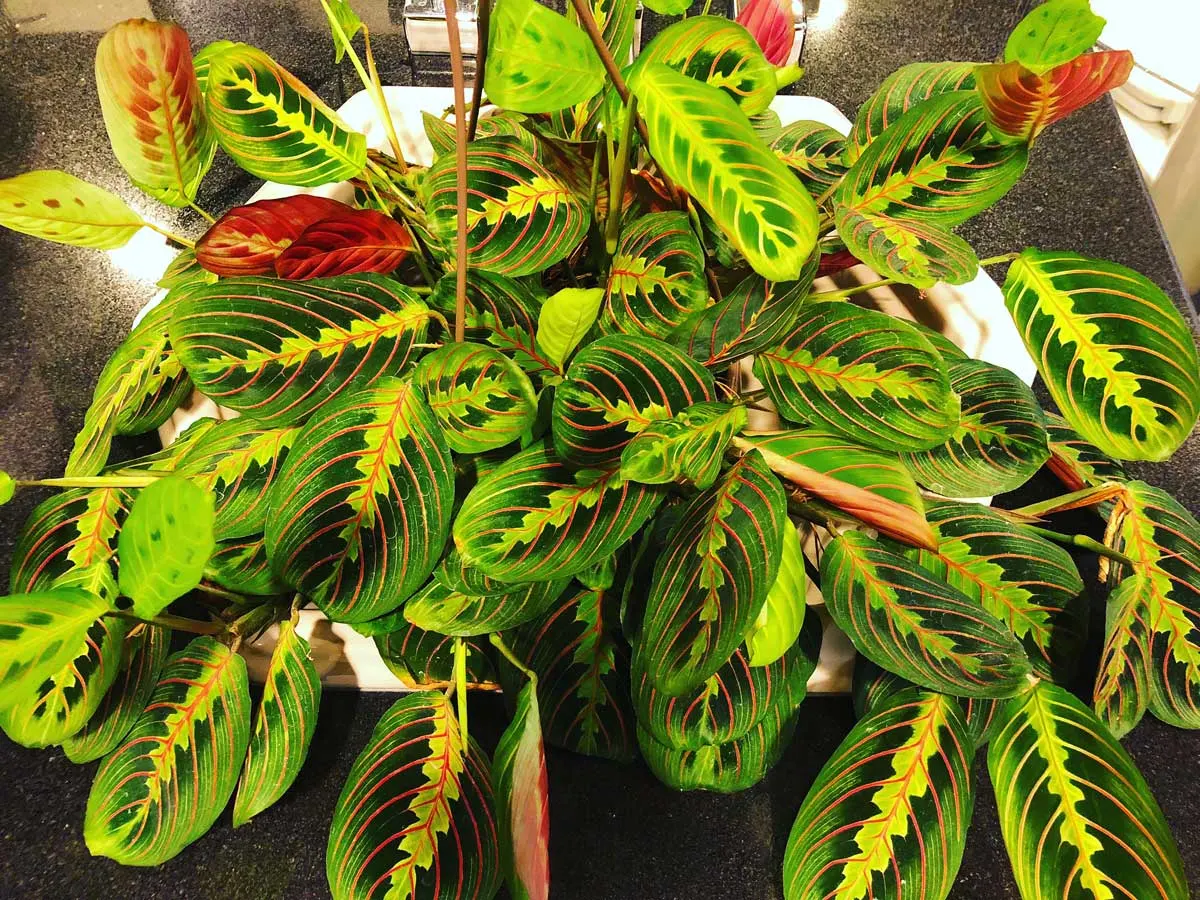
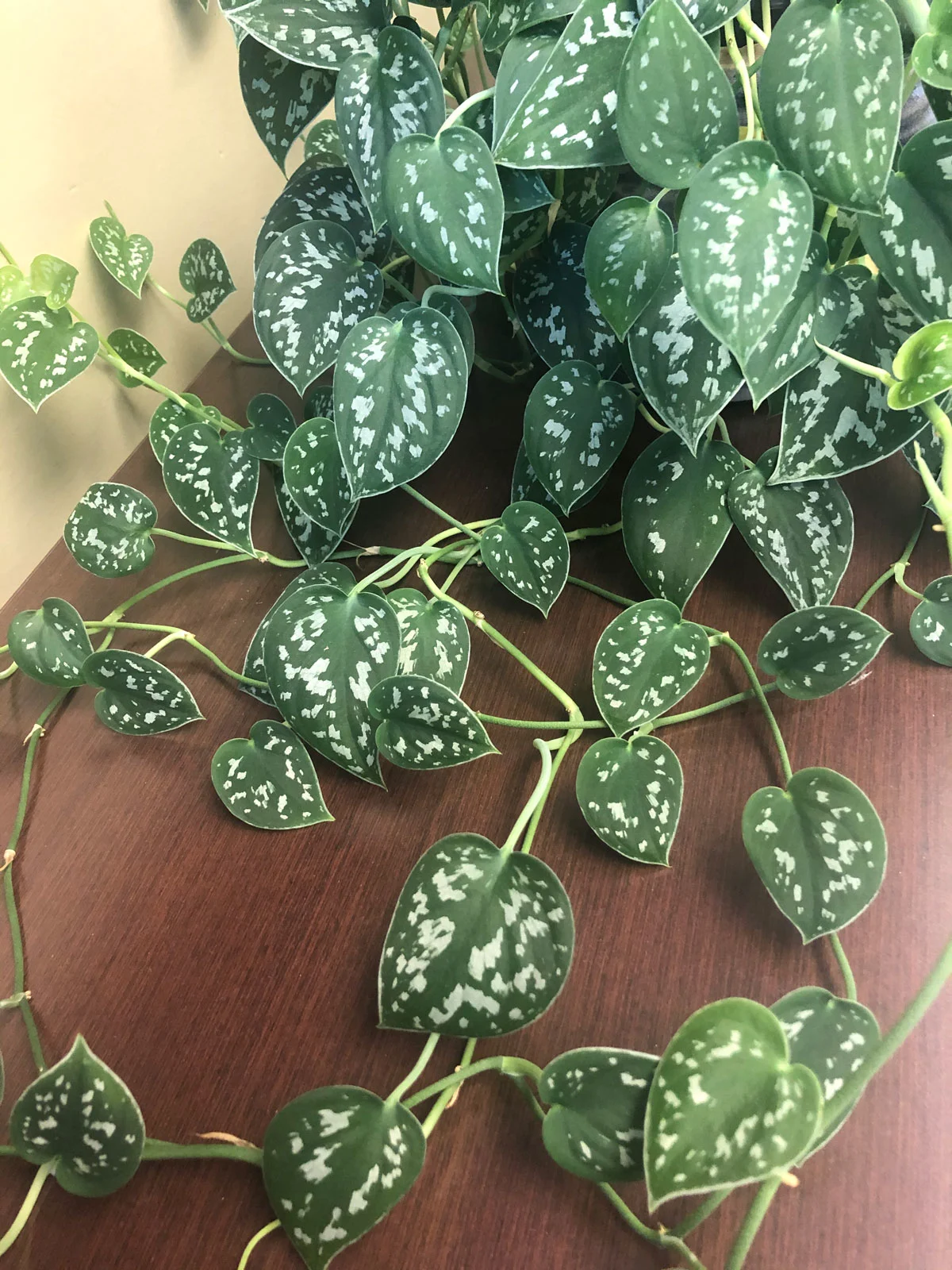
Becca
Tuesday 23rd of May 2023
Good afternoon!
I have a Scindapsus Pictus that I received as a cutting in the mail about a year ago. At first it did fantastic and began growing right away! I had two separate vines going and potted them into the same pot. They did well for 4 or 5 months before suddenly it started losing leaves! I lost one vine entirely and the other one dropped to one poor leaf. Now it's growing leaves again but they are TINY little things. I water regularly when the top inch or so of soil is dry. Last month I added some slow release fertilizing pellets. Is there anything else that I can do to help my plant perk back up?
Raffaele
Friday 26th of May 2023
What kind of light is your plant getting? Is it close to a window? How far and what exposure?
Jacque Mannakee
Wednesday 5th of January 2022
How does one make the plant bushier?
Jacque Mannakee
Sunday 2nd of January 2022
Hi,
I recently purchased a plant labeled Philadendron Scindapsus "Silver Satin," in a 4" pot. I'm planning to plant in a hanging planter and would like to get the plant to become bushier, with more vines. How do I go about this?
Raffaele
Wednesday 5th of January 2022
Hi Jacque! I would let it grow a bit, and then take cuttings, root them, and plant them back in the same pot (or you may have to go up a pot size so you have room). This would be the quickest way to get a bushier plant.
Christa
Thursday 11th of November 2021
Raffaele,
I love your blog and consult it often for tips :)
I have an Exotica that’s done really well and about 2 weeks ago I brought home a well established full healthy looking 4’ long argyraeus. Now the argyraeus seems to be struggling a bit with curling and yellowing leaves. I just watered it for the 2nd time since I brought it home. The water seems to run out really quickly and the plant was dry again a few days later. It’s not near a heater. It’s a foot back from a South facing window that is bright (although It’s getting pretty overcast this time of year) but shielded from direct rays by the house next door. How can I help her?
Christa
Saturday 13th of November 2021
@Raffaele,
This is very helpful! Thank you so much! I was afraid of overwatering, but I think you are absolutely right about the soil and I will try it.
Raffaele
Saturday 13th of November 2021
HI Christa! I'm glad you enjoy my blog! I'm suspecting that perhaps the soil went so dry some point that it is now repelling water, and you'll have to do a little work to condition the soil back to normal. Mixes that have peat moss in them will typically do this if you let them go completely dry for too long, and your comment about the water running through very quickly was the red flag for me so I'm glad you mentioned that! There are a couple things that you can do to remedy the situation. Option 1: Take your plant to a sink or bathtub, and water it several times in a row over the course of a few minutes. Use warmish water, and don't worry about "overwatering." You need to be able to rewet the soil. Option 2: The second option is you can dunk the pot in water until the pot is submerged in water (assuming you don't have much loose soil on top that you'll make a huge mess....and if this is the case, I'd recommend the first option I talked about). Keep it submerged for a few minutes. Whichever option you choose, the pot should feel much heavier after you're done. Make sure to let all excess water drain away (I'm assuming you have a drainage hole(s). I hope this helps!
Karen
Friday 10th of September 2021
I have just gotten a large Scindapsus Exotica and I've noticed that the baby leaves that are opening up are a pale green rather than the dark forest green of the older leaves. Is it usual for the baby leaves to turn darker as they mature or do they need something? I haven't noticed this with my Argyraeus.
Raffaele
Friday 10th of September 2021
Hi Karen! Those are beautiful plants! Keep in mind that these are very variegated, so perhaps your new growth is just that. Variegated plants can be very unpredictable. Over time, if you find that those new, pale leaves don't develop the way you want them too, you can always trim the vine(s) back to the first leaf that has a more balanced variegation. This should encourage new growth and hopefully leaves that are more balanced. I hope this helps!